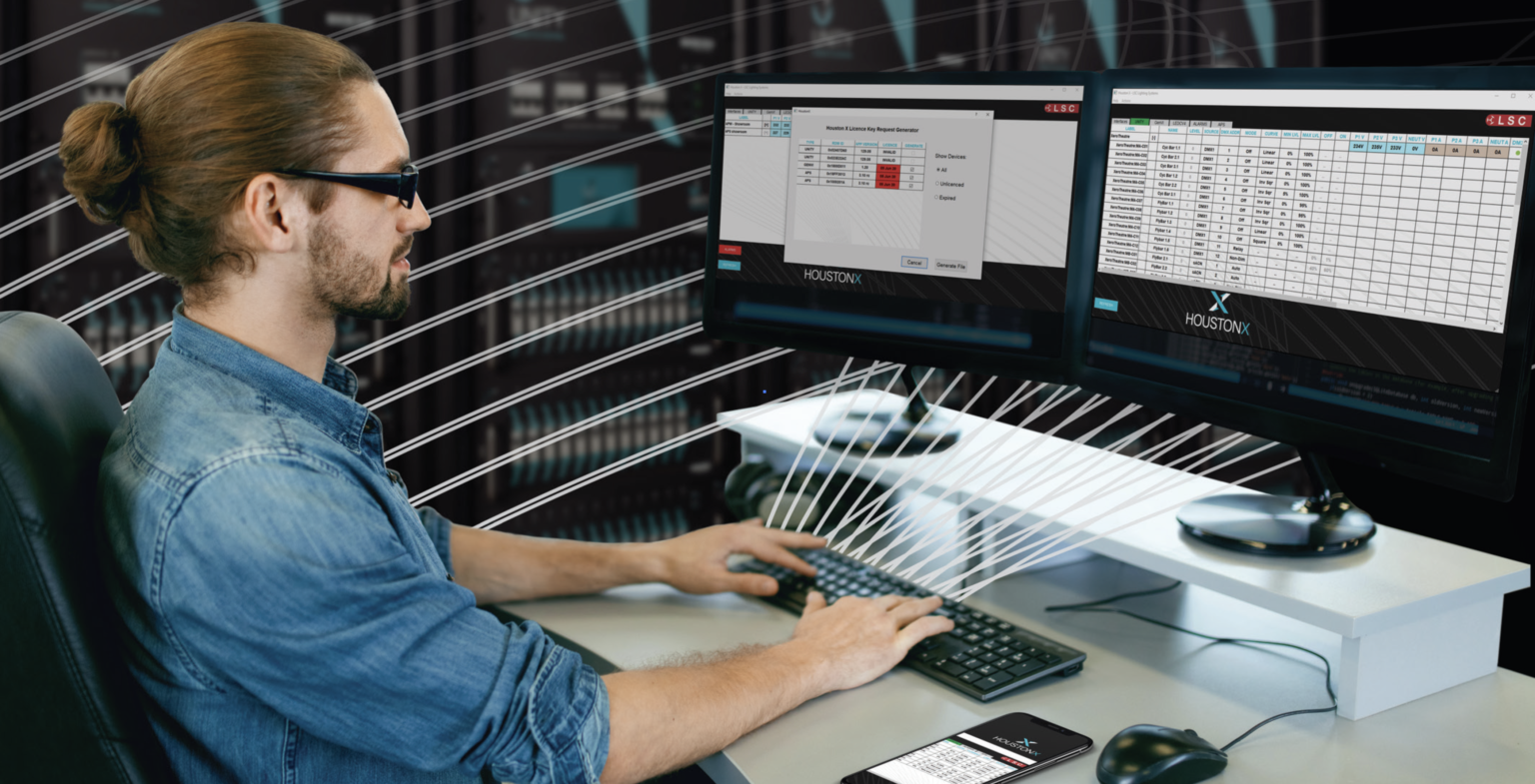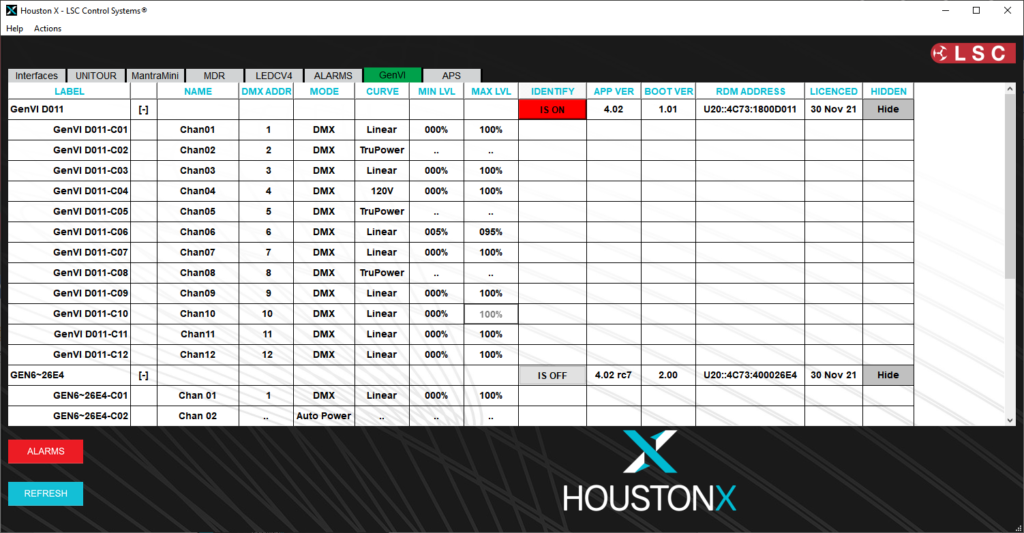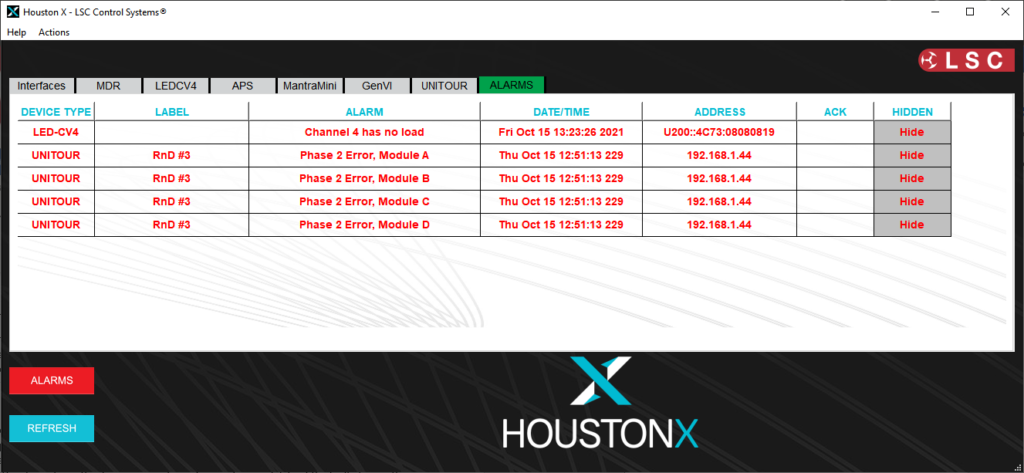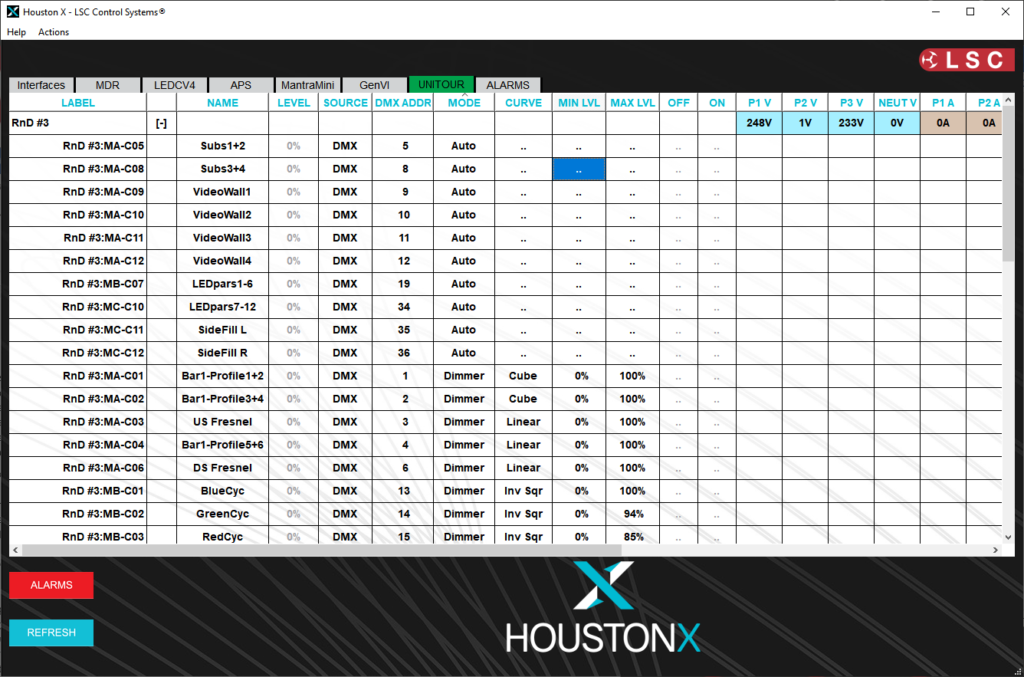News
23 Nov 2021
LSC’s HOUSTON X

Subscribe to CX E-News
“Houston, we have a problem.” This iconic statement, made famous in numerous movies and memes, has become a catchcry for any situation where something goes wrong.
From a party running out of beer, to a major traffic jam on the freeway, everyone knows what it means. When a fault occurs in a TV studio, a theatre or on a major event that one sentence is enough to grab everyone’s attention and get them focussed on finding a solution – quickly!
LSC Control Systems took that concept and created a dedicated software package to allow the monitoring and configuration of their Audio and Video power distribution products, as well as their lighting control products. If a circuit breaker trips, a phase of power is lost, or a cable is unplugged, HOUSTON X will let you know all about it.
Knowing about an issue is only half the solution. HOUSTON X also acts as Mission Control, allowing the user to remotely configure LSC products from any Windows computer (Mac OSX, Android and iOS tablet versions coming in early 2022).
HOUSTON X uses industry standard protocols including RDM and TCP/IP Ethernet. Devices can be connected via wired or wireless infrastructure allowing HOUSTON X to be utilised in both new and existing installations as well as with portable and touring systems. When the software is installed on a laptop or tablet, the operator can be located anywhere within Wi-Fi range and still have complete control.
Multiple copies of HOUSTON X can be run in a single venue. The technical manager could run the software on a desktop computer, whilst the techs run it on their tablets as they move around the venue. Multi-space venues can run individual systems in each area, which only see and control the devices used in that space, as well as a Master system that can see and monitor all devices throughout the entire venue. At a large event any number of techs could have their own copy of HOUSTON X running on their personal device to allow them to see the state of all or selected LSC devices in the rig.

In almost all venues the devices to be controlled are located remotely from the bio box. Older venues tend to have a single central location with all the power control and data distribution sharing a common space. Newer venues may have all the devices distributed around the building, located adjacent to the items that they control. This distributed approach makes it harder for the technicians to configure and monitor the individual items, as they must walk between each location. In many venues this is not as easy as it sounds. Devices located on each side of a theatre stage, may require a ‘cut lunch and waterbag’ trip to access. I have worked in venues where accessing an item of equipment required one of the following challenges.
• Climbing a ladder on the external wall of the venue and dropping down onto the grid through an external weatherproof roof hatch – not a lot of fun when it was raining.
• Using special access doors built into the main air-conditioning duct to allow traversing the full length of a catwalk in a theatre. The two items crossed over each other due to a design oversight, so they simply installed a door in each side to allow someone to crawl through.
• Using a hidden door in the entry of the ladies toilets to access the dimmer room – rather embarrassing during interval when there were queues.
HOUSTON X allows the operator to instantly adjust parameters on any device, no matter where it is located, without leaving their seat. The improvements in efficiency alone can pay for the software in a matter of weeks. Add to this the reduction of OH&S issues that can arise from moving about in a venue and the software very quickly becomes a ‘must have’ item from a management perspective.
With all the devices located remotely, faults can occur without anyone noticing. Would you know if one of your dimmer racks was getting hotter than normal, or if the incoming mains voltage on Phase A was getting dangerously high?

The real-time monitoring of HOUSTON X shows this critical information for all connected devices. Users can see what is happening and detect potential issues before they become critical faults. Whether you are a one-person owner operator or part of a major events crew this information is invaluable to help prevent a mis-show failure.
If a fault does occur mid show then you need to know the three Ws: what, when and where. The Alarms tab provides this information in a clear and concise manner. If any HOUSTON X enabled device has a fault, the red Alarm button is displayed and the user can immediately drill-down to see the details. The alarm shows the device name, channel name, time and date of the fault along with a text description of the issue, allowing the operator to respond immediately to rectify the issue. This feature is very popular at events where one person may be responsible for looking after multiple small stages, as they can now move between them whilst still being able to see what it is happening at the other locations. It is also ideal for single person gigs where you are both the operator and system tech.
A common request a system tech gets is to power cycle an item in the rig. Sometimes a LED video panel, computer or moving light needs a hard reset, which can be achieved by power cycling the device. When used in conjunction with LSC power control products such as the APS (Advanced Power System) or UNITOUR, HOUSTON X allows the operator to remotely turn channels off and on. This is ideal for hard power resets, as well as powering down items when they are not required. The APS and UNITOUR also report the current draw on each phase, allowing the tech to make sure that they are not about to trip the upstream circuit breaker. If the generator is being overloaded, they report the incoming voltage and/or phase variations to HOUSTON X for the operator to interpret and act upon before a major failure occurs.

The UNITOUR power distribution system takes this one step further allowing the operator to monitor the conventional and earth-leakage current on each individual output channel in real-time. Preset limits can be programmed that will issue an Alarm if exceeded. Operators can now see if any of the 48 individual channel RCBOs are getting close to their ELC trip value and take action to mitigate the situation. In the event of a circuit breaker trip, an alarm is generated that includes the name of the channel, along with its location in the rack. More importantly, both the conventional and earth leakage current flow immediately prior to the trip are included, which is the vital information required to know whether the RCBO tripped from over-current or an ELC fault.
HOUSTON X also allows the operator to configure multiple individual products as one larger unit. A venue with 6 x 12 channel GENVI dimmer racks can now configure them as if they were one large 72-way dimmer rack. Select all the channels, enter a base DMX address and HOUSTON X will do the rest. Dimmer racks can also have the fade curve, min/max levels and channel modes altered remotely. The simple spreadsheet grid allows the operator to sort the information by column type, allowing all the dimmers with a 120v dimmer curve to be grouped together, even when they are spread across multiple dimmers in a venue.
Rental companies can use HOUSTON X to easily reconfigure items before and after a hire. Rather than having to manually reconfigure multiple devices by hand, HOUSTON X can reconfigure multiple devices simultaneously. Whether it be resetting them all to the factory defaults, or uploading a specific configuration file, the process is quicker and less prone to user error than the old-fashioned manual method.
TV stations and theatres use the show recall feature to quickly switch between different presets. At the end of the morning breakfast show a few mouse clicks is all that is required to recall the pre-programmed power, dimming and DMX data settings for the afternoon quiz show or the evening panel programme.
The HOUSTON X software comes in two parts. The product license/s and the user software. Each product to be monitored and/or controlled requires a license to be installed before it can work with the free HOUSTON X software app. This approach means that even a 10 year old GENVI dimmer rack can work with HOUSTON X simply by buying a license for the unit. A venue with 12 dimmer racks requires twelve licenses, one per rack. The license is a simple subscription model and can be purchased online or via a local dealer.
The free HOUSTON X software can be downloaded by anyone from the LSC website (https://www.lsccontrol.com.au/product/40/houston-x-/). Once installed and connected to the system it will auto-discover all the licensed LSC products. To prevent unauthorised access to the devices a PIN code is required to alter any of the device settings. Once this PIN is entered all the settings are displayed in the software and can be edited. All the devices on the network can be named for ease of identification, as can the individual channels, useful for labelling and identifying what is connected to the output.
HOUSTON X is made in Melbourne Australia by LSC Control Systems, a local manufacturer and R&D company with over 40 years’ experience designing and manufacturing products for the entertainment industry.
Subscribe
Published monthly since 1991, our famous AV industry magazine is free for download or pay for print. Subscribers also receive CX News, our free weekly email with the latest industry news and jobs.




